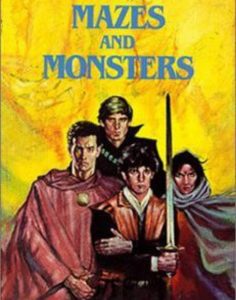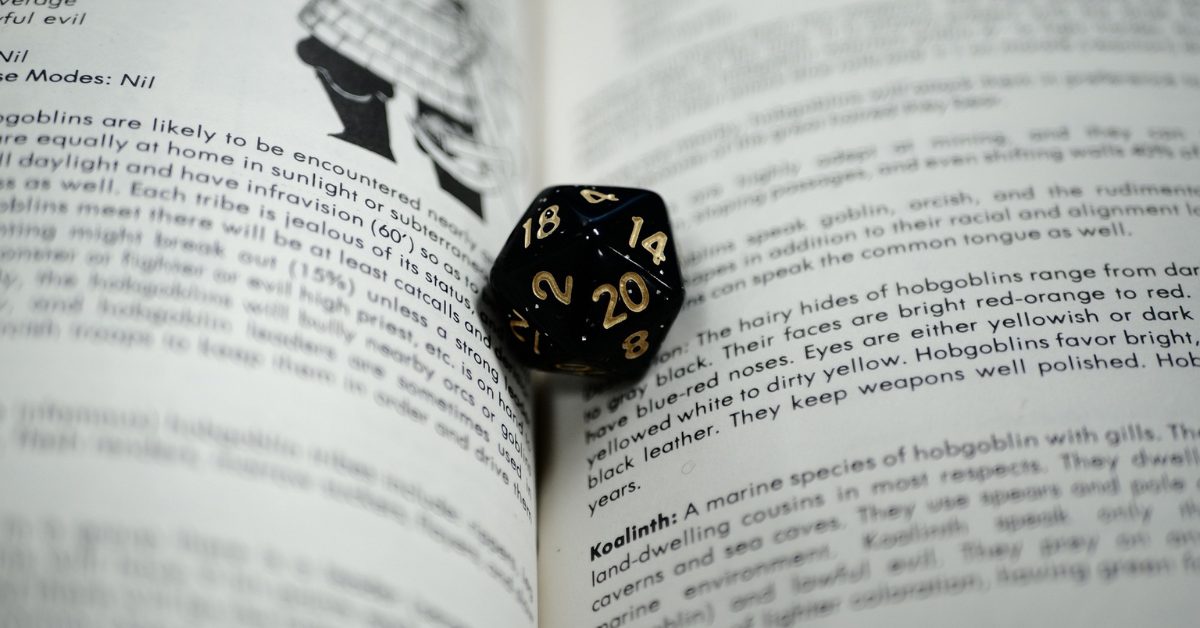When James Dallas Egbert III went missing in 1979, people pointed to an odd culprit: Dungeons and Dragons (D&D), the roleplaying game he was fond of playing. This helped to set off a wild and tragic cycle of speculation and recrimination that became known as the Satanic Panic.
Games are often blamed with little evidence
There are always sensational news stories about how a particular children’s game can be a source of violence. As recently as 2019, a headmaster banned the playing of tag, insisting that only games with “gentle hands” be allowed in his playground.
Back in the 1990s, parents were divided over whether the new craze for Teenage Mutant Ninja Turtles was responsible for playground violence. Mary Alvidrez, who ran a daycare center in Los Angeles, told the Los Angeles Times that she’d banned anything Turtle-related in the center. “My decision was based on the children’s actions,” she is quoted as saying, “the way they were playing. They would play Turtles and imitate them. They got a little carried away. The older kids would do karate on the younger ones.”
A decade earlier, the game Dungeons and Dragons attracted similar negative attention from parents, but in this case, worries escalated until various religious groups claimed it was teaching children Satanic practices.
Dungeons and Dragons is a fantasy tabletop roleplaying game. Players sit around the table, with one of them nominated as the Dungeon Master (DM) while the rest are player characters (PCs), controlling an individual character that they have created. The game was a collaboration between Dave Arneson and Gary Gygax, and it was first published in 1974 by Tactical Studies Rules Inc. (TSR Inc.).

Unlike traditional board games, a D&D game can last several sessions as the players work their way through a series of adventures known as a “campaign.” The players advance using a combination of logic, basic mathematics, dice rolls, and plenty of imagination. There are no computer screens involved, only player cooperation and creativity.
When described like that, D&D sounds like something every parent should be encouraging their children to play. However, one particular incident in 1979 began a snowball effect that ended up with allegations of Satanism and even necromancy being leveled at the D&D community.
James Dallas Egbert, D&D, and the Satanic Panic
When prodigal student James Dallas Egbert III went missing from Michigan State University in August 1979, his parents hired a private investigator called William Dear to work alongside the police in the search for their son. Egbert had left a suicide note, so the pressure was on to find him quickly.
It was Dear who, after examining a pin-board in Egbert’s room, guessed that he’d gone into the steam tunnels under the power plant on campus. When the tunnels were searched, Egbert was not found, but there were clear indications that he’d been there, and the search continued.
During the investigation, Dear learned that Egbert had been suffering from pressure about his academic performance as well as issues relating to substance abuse and his sexual identity. When speaking to the media, Dear left out such information, possibly to spare the family.
Instead, Dear mentioned other matters, such as the fact that Egbert might have entered the tunnels while engaging with live-action roleplay (LARPing). This is a variant of D&D where the individuals physically act out the actions of their characters, using props and costumes. The media jumped on this theory and ran with it.
When Egbert finally returned to his family, he asked Dear to keep his personal circumstances out of the papers. In the absence of any other explanation, the D&D theory persisted. After Egbert tragically took his own life in August 1980, Dear tried to set the record straight in his book The Dungeon Master, published in 1984. But by then, other incidents had helped to cement the idea that D&D was dangerously subversive.

In 1981, Rona Jaffe wrote a novel called Mazes and Monsters based on Egbert’s experiences. It involved a group of roleplayers taking their game, “Mazes and Monsters,” to nearby caverns where one member suffering from mental health issues started to believe that he was actually the character he was portraying.
Mazes and Monsters tapped into the negative media hype so well that in 1982, CBS turned the book into a movie featuring Tom Hanks in his first leading role. Other books, such as Hobgoblin by John Coyne, perpetuated this trend.
Further tragedies cemented the negative associations of D&D
In 1982, a high school student named Irving Lee Pulling passed away from a self-inflicted gunshot wound, and his mother blamed D&D. Patricia Pulling sued both the principal of the high school (who had run the D&D game her son was involved in) as well as TSR Inc.
Her argument was that one of the curses placed on her son’s character was actually real. If you go with the evidence put forward by Paul Cardwell Jr. in his article The Attacks on Role-Playing Games published in 1994, Patricia claimed that “this curse compelled [Irving] to kill and that he heroically sacrificed himself rather than carry out the curse.”
Although Patricia Pulling lost her court case, she went on to form the group Bothered About Dungeons and Dragons (BADD) in 1983. Through this group, she campaigned to convince people that D&D contained (among other things) demon summoning, witchcraft, blasphemy, and even cannibalism.
BADD found an audience within the Christian community, where some objected to the game because of its use of dark magic and heathen gods. Jon Quigley, a member of the Lakeview Full Gospel Fellowship, was quoted in 1985 as saying that “the game is an occult tool that opens up young people to influence or possession by demons.”
Because of the game’s negative association with witchcraft and demonology, some fans and players found themselves ostracized by sections of society. Andy Smith, a roleplayer and a Christian, is quoted by a BBC News article as being asked to remove his RPG books from shared accommodation when he was working for a Christian organization.
Much like with the controversy surrounding the Teenage Mutant Ninja Turtles, the main worry was that children playing D&D would be unable to distinguish fantasy from reality, and they’d carry their violence into their real lives. The whole issue became swept up in the “Satanic Panic” that gripped America in the 1980s and 1990s.
Yet all this controversy didn’t stop the game from finding an audience. In 1981, over three million people were playing the game around the world. By 2004, estimates suggest that the game had been played by over 20 million people since it first appeared.

However, although the game is now a firm favorite with children and adults alike, D&D still has strong critics. In 2004, Erik Sofge wrote in the magazine Slate that because D&D was the first RPG to really capture the imagination of players, its popularity means that “new generations of gamers are introduced to RPGs as little more than a collective fantasy of massacre.”
More from us: When Smallpox Scars Were Used As Makeshift ‘Vaccine Passports’
In addition, the “inability to distinguish fantasy from reality” argument has been used by prisons to ban inmates from playing the game. Waupun Prison in Wisconsin banned the game in 2004 after Captain Muraski, the prison’s gang specialist, claimed it could “foster an inmate’s obsession with escaping from the real-life, correctional environment.” The decision was appealed by a prisoner, but the ban was upheld by a court that deemed it “reasonable policy.”
Balancing out such criticisms are psychologists who suggest D&D is actually beneficial in encouraging regular socialization, problem-solving skills, and positive moral decision-making. But whatever divergent opinions there may be about D&D, one thing is for certain: having weathered the Satanic Panic and other controversies, it looks like D&D is here to stay.
